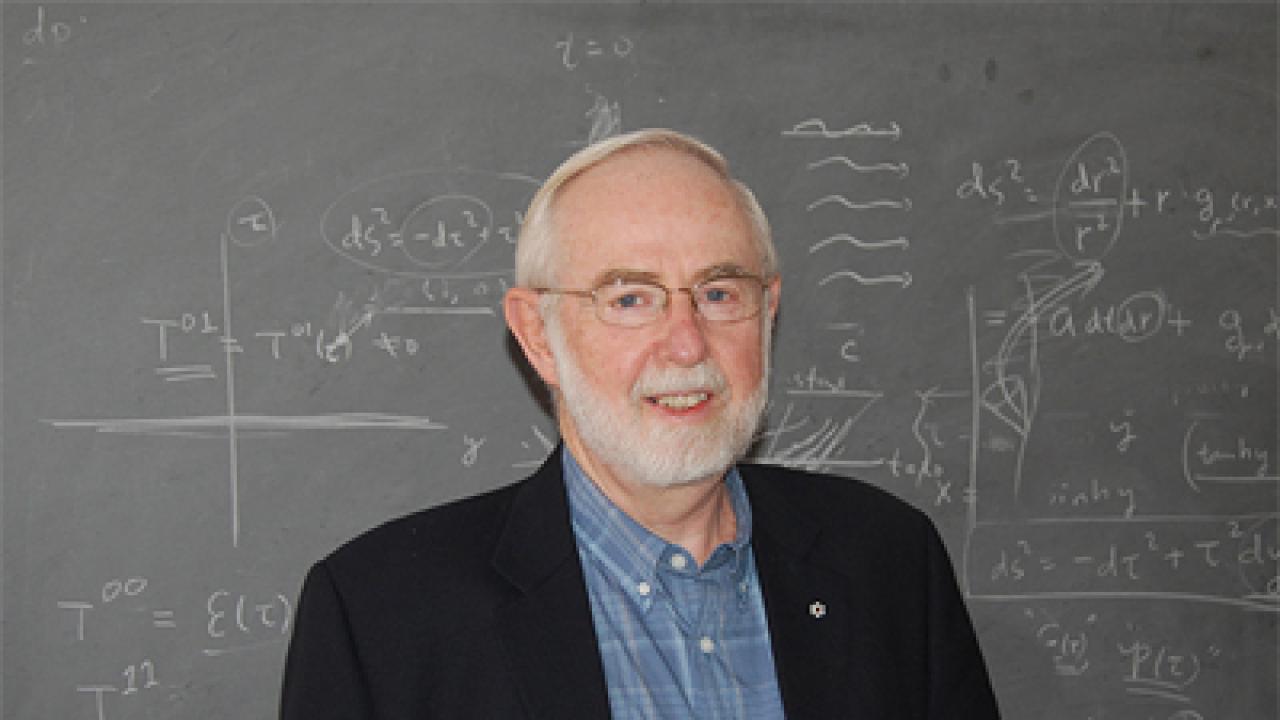
One of the laureates of the 2015 Nobel Prize in Physics lectured at ICTP during a visit in 2009. Arthur B. McDonald of Queen's University in Canada won half of this year's prize for the discovery of neutrino oscillations, which shows that neutrinos have mass. While he was at the Centre, McDonald met with ICTP scientist Alexei Smirnov and other ICTP particle physicists.
Smirnov, whose work on neutrino oscillation has established him as an authority in the field, is one of the founders of the Mikheyev–Smirnov–Wolfenstein (MSW) effect, which predicts the influence of matter on neutrino oscillations. McDonald, who was director of Canada's Sudbury Neutrino Observatory (SNO), led experiments that confirmed predictions theorized by Smirnov and his colleagues. Indeed, the MSW effect is mentioned in the scientific background for the 2015 Nobel Prize in Physics.
Below is a reprint of an interview with McDonald during his ICTP visit in 2009, in which he credits ICTP's theoretical work on neutrinos as "an inspiration for the SNOLAB experiments". The original article appeared in News from ICTP 127 (2009).
SNO Director Visits ICTP
Researchers at ICTP and Canada's Sudbury Neutrino Observatory combine theory and experimentation to study solar neutrinos
ICTP is part of an international effort combining theory and experiment to study solar neutrinos. In March, Dr. Art McDonald, director of Canada's Sudbury Neutrino Observatory (SNO), visited ICTP to give a lecture on "Particle physics and astrophysics with the Sudbury Neutrino Observatory and the new SNOLAB", and to meet with ICTP researchers who specialise in neutrino physics.
SNO houses a neutrino detector located 2 kilometres underground in a nickel mine, and is run by an international collaboration of researchers. In this interview, Dr. McDonald talks about future directions for SNO's new neutrino laboratory and what neutrinos can tell us about the universe.
What are the next steps for SNO?
The original SNO facilities have now been expanded into an underground space of 5,000 square meters, known as the SNOLAB. In addition to observing solar neutrinos and neutrinoless double beta decay, the new facility will look at topics such as cosmic dark matter and supernova neutrinos. The experiments we will be doing require a location deep underground to reduce cosmogenic backgrounds to acceptable levels. The heavy water that was the target for solar neutrino interactions in past SNO experiments will be replaced with a liquid scintillator that gives off more light than the heavy water when charged particles interact in it. Now we will be able to study neutrinos of much lower energy than before.
What else will SNOLAB's work be able to tell us about neutrinos?
The SNOLAB's work is important in terms of applying theories of how neutrinos fit into the standard model of elemental particles and also perhaps to help us understand the processes that led to a major transition at the birth of the universe, when antimatter was produced in approximately equal amounts to matter. Today's universe contains very little antimatter.
How does ICTP's theoretical work fit in with SNO's experiments?
ICTP's theoretical work on neutrinos has been an inspiration for the SNOLAB experiments. In particular, [ICTP scientist] Alexei Smirnov's model, which defines the interactions of neutrinos with matter in the sun, has provided a clear explanation for why processes affecting neutrinos are different at different energies. SNO and SNOLAB can test this model in great detail. Any deviations can possibly explain other neutrino properties or even explore a connection between neutrinos and dark energy. Alexei's model is a key to understanding neutrino properties in more detail.
Our future work will explore a number of cases that are pointed out to us by the extensive theoretical work that Alexei does. For us to maintain an opportunity to interact regularly is very valuable for us to do the right experiments and to understand the implications of our observations. It is a very nice experimental/theoretical collaboration.
















